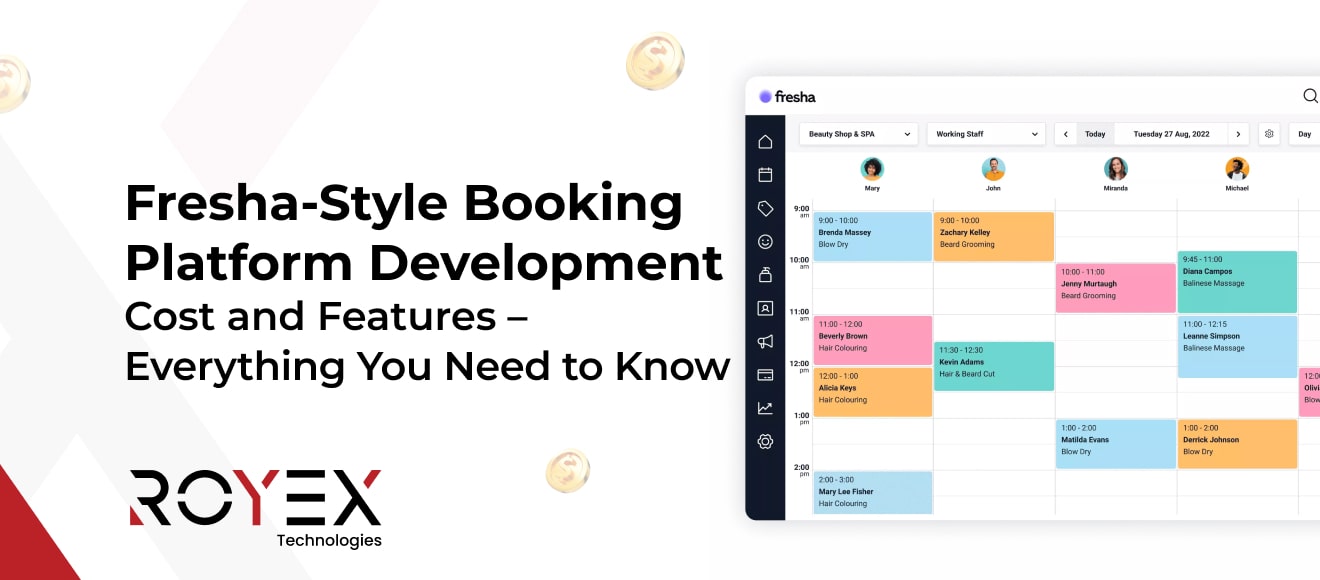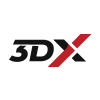
Fresha-Style Booking Platform Development Cost and Features – Everything You Need to Know
What is Fresha?
Fresha is a global appointment-booking and business-management platform focused on the beauty, wellness and self-care industry (salons, spas, barbershops, nail studios, therapists and the like). Today it serves businesses in over 120 countries and is used by tens of thousands of venues.
For end-customers (consumers) Fresha provides the ability to discover nearby stylists/spas, book appointments online (via web or mobile), select time slots, choose staff, pay (or pay later) and leave reviews.
For businesses (salons/spas) Fresha offers an all-in-one software suite: online booking, calendar/appointment management, point-of-sale (POS) or checkout, client database / CRM, team/staff scheduling, inventory management, marketing/loyalty tools, analytics/dashboard, integrations (e.g., social media/book-a-widget) and in many cases the marketplace exposure through Fresha’s consumer-facing app.
Originally the company launched under the name “Shedul” and re-branded to Fresha. It has raised significant funding and is valued at over USD 640 million.
In short: Fresha connects service-providers (beauty/wellness businesses) to consumers, and gives those businesses a digital platform to run their operations more efficiently, while giving consumers a convenient “find-and-book” experience.
How Fresha Helps People Do Business
Let’s look at how Fresha supports the business side (salons/spas/beauty).
Efficiency & digital transformation
Many small to medium salons previously operated with pen-and-paper appointment books, phone calls, manual staff scheduling, cash or card payments at checkout, manual reminders and limited CRM/marketing. Fresha digitalises and automates much of that: online bookings 24/7, automatic notifications (email/SMS) to clients and staff, calendar management, integrated payments, staff/room management, inventory tracking, analytics. For example, Fresha’s “help centre” mentions clients, services, team, shifts, calendars.
By automating repetitive tasks (confirmations, reminders, cancellations), the business reduces no-shows, improves utilisation of staff time, improves client retention, and has better visibility of revenue, service mix, staffing levels, product inventory, and marketing outcomes.
In addition, by being on a marketplace (the Fresha consumer-app) or via integrations (Facebook/Instagram/Google) they gain exposure to new clients they might not otherwise attract.
One-stop operations & growth
Fresha positions itself as not just a booking tool but the full stack for beauty/wellness business operations: from appointments to POS to payments to team/staff to marketing to loyalty. As one article says: “Fresha offers all essential and advanced salon management features, including seamless online booking, robust CRM, integrated payments, real-time inventory management, and powerful analytics.”
For business owners that means fewer disparate tools (booking system + separate POS + email tool + CRM + payroll) and more of an integrated platform. That saves cost, reduces complexity, improves data consistency, and gives greater leverage (for example cross-selling, loyalty programmes, targeted marketing).
Increased visibility & customer acquisition
Because Fresha has a consumer-facing marketplace/app, businesses using Fresha can benefit from the platform’s network effect: when consumers search for salons/spas on Fresha’s app, partnered venues get discovered. That means business growth potential via the platform, not just via the business’s own marketing.
Also, integrated booking via Instagram/Facebook/Google means businesses can capture clients from social channels more easily.
Scalability & multi-location support
For businesses with multiple locations or larger teams, Fresha supports multi-user calendars, team management, location management, multi-currency/multi-language (for global deployments). For instance, Fresha now supports nine languages for its global footprint.
Summary
In short: Fresha helps service-businesses (beauty/wellness) to digitise, streamline operations, manage clients and staff effectively, acquire more clients, track performance & grow. For consumers it makes it easy to find, book, pay, review. It forms a win-win: businesses get improved operations and demand, consumers get convenience.
What is Fresha’s Business Model?
Understanding how Fresha makes money (or can make money) is critical when planning to build a similar platform. Below are the key components of Fresha’s business model.
Freemium / no-subscription core
One of Fresha’s main differentiators is that they offer the core booking and business-management software free (or subscription-free) for many businesses. For instance MarketBox reports: “Fresha is the only* subscription-free salon and spa management software available for wellness businesses … Plans are free; however, you will pay a 20% one-time commission for every new booking made via the Fresha marketplace.”
Another source: “Fresha operates on a commission-based model, charging no upfront monthly fee but taking a 20% cut on new client bookings through their marketplace.”
Commission on bookings & transaction fees
Fresha generates revenue by taking a commission on bookings made through its marketplace (i.e., when consumers discover a business via Fresha’s network). It may also charge for payment processing. For example: one article says they charge a small commission for every booking.
MarketBox mentions that Fresha charges 2.29% + US$0.20 per transaction for payment processing (on top of booking commission) and 20% on new client bookings via marketplace.
Premium features / add-ons / value-added services
Beyond the free core, Fresha offers (or will offer) premium features: advanced marketing tools, loyalty programs, advanced analytics, multi-location enterprise features, integrations. These are monetised via subscription or per-feature usage. For example: “Explore paid features” on Fresha website.
Marketplace and product sales
In its business model canvas, Fresha’s revenue streams include partnerships with product suppliers (beauty/wellness product marketplace).
Scale & network effect
With many businesses and consumers on its platform, Fresha benefits from network effects: more consumers → more businesses join, more businesses → more consumers. That drives volume of bookings, which drives commission revenue, and allows cross-selling value-added services. The business model leverages value captured from both sides of the marketplace.
Summary of business model
In Summary
-
Core business software offered either free or very low cost to attract many service-businesses.
-
Monetisation through commission on bookings via its consumer marketplace.
-
Payment processing fees and add-ons (marketing tools, loyalty, enterprise features) provide additional revenue.
-
Marketplace and product partnerships provide further revenue streams.
-
The freemium/zero-subscription model lowers barrier to adoption, accelerates network growth; monetisation is transactional and value-based.
How to Run a Fresha-style Business
If you intend to build and operate a business similar to Fresha (marketplace + business-software for service providers), here are key operational levers and how you’d run it.
Value Proposition to Service-Businesses
You must clearly articulate and deliver value to the service providers (salons/spas/beauty businesses). That value includes:
-
Easy online booking (24/7) to reduce phone calls and administrative burden.
-
Calendar/appointment management, staff scheduling, resource (rooms/equipment) management to optimise utilisation.
-
Integrated payments / POS / checkout to simplify revenue capture.
-
Client management (CRM): history of services, preferences, contact details, reviews.
-
Marketing & client-retention tools: automated reminders, loyalty programmes, upsell/cross-sell, referral campaigns.
-
Analytics & insights: KPIs on bookings, revenue, staff utilisation, no-shows, client acquisition/retention, service mix.
-
Multi-location/team support + integrations with social media/Google listings for discoverability.
Providing this end-to-end software means the service-business sees the platform as a core operating tool, not just a booking portal.
Value Proposition to Consumers
Simultaneously, you must win the consumer side:
-
A simple discover-and-book experience (search by location/service, filter by staff, see availability, price, book online).
-
Mobile app (and/or responsive web), with payment integration, reviews/ratings, reminders.
-
Convenience features: reschedule/cancel easily, notifications, loyalty rewards, discover new venues.
-
Trust — quality verified businesses, secure payment, transparent pricing.
Customer Acquisition & Marketplace Creation
To run the business you need to build and balance both sides of the marketplace (supply – service-businesses; demand – consumers). Key steps include:
-
On-board service-businesses: initially target a specific geography/vertical, drive adoption by offering the free software and marketplace exposure.
-
On-board consumers: marketing (digital ads, partnerships, social media), SEO, referral programmes, user incentives, mobile app.
-
Ensure service-businesses deliver good experience (so consumers trust the platform) by vetting, support/training, review system.
-
Provide integrated payments and booking flow so that the transaction remains within platform → generates commission.
-
Monitor, optimise liquidity (availability vs demand), reduce friction in booking and operations.
-
Build network effect: as more businesses join, consumers find more options → as more consumers come, more businesses want to join.
Monetisation & Revenue Management
-
Commission on bookings: define what bookings via the marketplace count as “new” vs “existing client.”
-
Payment processing fees: integrate payment gateway and negotiate rates.
-
Subscription/premium add-ons: build tiered plans for advanced features.
-
Marketing/advertising: allow businesses to pay for featured placement or promotions.
-
Product sales/marketplace: sell physical goods or partner with suppliers.
-
Data & insights: monetise anonymised data for vendors or partnerships.
Operations & Business Support
Running the platform involves:
-
Customer support (for both businesses and consumers).
-
Sales/business-development for partnerships.
-
Marketing & growth (consumer and business acquisition).
-
Technology & platform operations (scalability, security, localisation).
-
Fraud & payment operations (refunds, chargebacks).
-
Analytics & product-iteration (tracking KPIs, improving features).
-
Legal/compliance/regulation (data protection, taxes).
-
Localization & global rollout (multi-language, multi-currency, compliance).
Metrics You Must Monitor
-
Number of service-businesses onboarded & active.
-
Number of consumer users.
-
Number of bookings per business per month.
-
Gross booking value (GBV).
-
Commission take-rate.
-
Average revenue per business.
-
Business and consumer retention/churn.
-
Customer acquisition cost (CAC).
-
Lifetime value (LTV).
-
Utilisation metrics.
-
Operational costs.
Running in Your Region (UAE / MENA Context)
-
Localise for Arabic/English, AED, VAT, local payments.
-
Cultural marketing (regional salons/spas, gender-specific services).
-
Tap into tourism (international consumers).
-
Keep mobile first.
-
Comply with UAE data protection laws.
-
Partner with malls, hotels, and premium salons.
-
Support multi-location chains and Arabic UI/UX.
What Needs to Be Built: Technology Stack, Features and Platform Components
Platform Components
Consumer-facing web portal & mobile app
-
Responsive web and mobile apps for browsing, booking, payments, reviews, profiles.
-
Booking widget integration for websites and social media.
Business (service provider) dashboard / app
-
Service listing, staff/time slot management, POS, marketing tools, analytics, payments.
-
Multi-location and team management support.
Admin / marketplace management back-office
-
Onboarding, verification, commission tracking, dispute management, support tools.
Payments & transactions infrastructure
-
Payment gateways, in-app payments, refunds, PCI-DSS compliance.
Booking & scheduling engine
-
Real-time availability, rescheduling, cancellations, calendar sync.
Discovery & listings engine
-
Profiles, filters, reviews, SEO, map integration.
Marketing, loyalty & retention modules
-
Email/SMS reminders, promotions, referral programmes, loyalty rewards.
Analytics & reporting
-
Dashboards for bookings, revenue, staff utilisation, marketplace growth.
Inventory and product marketplace (optional)
-
Product listings, inventory tracking, retail or partner sales.
Multi-tenant, multi-language, multi-currency support
-
Localization for global rollout and role-based access.
Integration & APIs
-
Social media integration, booking widgets, Zapier, open APIs.
Infrastructure / DevOps / Security
-
Cloud hosting, microservices, database scaling, encryption, monitoring.
Recommended Technology Stack
Frontend (web + mobile):
-
Angular / React / Vue for web.
-
Flutter for iOS & Android.
Backend / API:
-
ASP.NET Core, Node.js, or Laravel.
Database:
-
MSSQL, PostgreSQL, or MySQL.
Caching & Real-Time:
-
Redis, WebSockets.
Payment Gateway:
-
Stripe, Adyen, PayTabs, Network International.
DevOps:
-
AWS / Azure / GCP, Docker, Kubernetes, CI/CD.
Push Notifications:
-
Firebase, APNS.
Geolocation:
-
Google Maps API.
Analytics:
-
PowerBI, Tableau, Looker.
Marketing & Messaging:
-
Twilio, WhatsApp Business API.
Security:
-
OAuth2/JWT, AES-256 encryption, audit logs.
Development Phases & Timeline
Phase 1 (Weeks 1–4): Discovery & Planning
-
Business discovery, requirements gathering, architecture, UI/UX wireframes, project planning.
Phase 2 (Weeks 5–10): Core Functionality Build
-
Consumer and business portals, admin setup, backend, payments, basic marketing tools.
Phase 3 (Weeks 11–14): Feature Expansion & Quality
-
POS, analytics, multi-language, admin enhancements, testing.
Phase 4 (Weeks 15–16): Polishing, Deployment & Launch
-
UI refinements, beta testing, monitoring, documentation, marketing launch.
Development Cost Estimate
Assumptions:
-
Team of 7 (PM, designer, 2 frontend, 2 backend, QA, DevOps).
-
Duration: 4 months (16 weeks).
-
Average rate: AED 250/hour.
Estimated Range:
-
AED 85,000 (Lean MVP): Limited scope, minimal integrations, one language.
-
AED 150,000 (Robust MVP): Full mobile/web, bilingual, analytics, admin portal, marketing tools.
Why this cost makes sense:
-
Mature stack, focused region, agile sprints, limited scope, faster MVP.
What New Features You Could Add to Make It Better
Suggested New Features
-
AI-driven scheduling & optimisation
-
Premium loyalty & subscriptions for consumers
-
Marketplace for beauty/wellness products
-
Advanced client engagement: WhatsApp + Chat + Video
-
Membership & subscription models for businesses
-
Multi-location/chain & franchise module
-
Corporate wellness & B2B bookings
-
Virtual services & home-service booking
-
Smart revenue management & dynamic pricing
-
Data-driven insights & benchmarking
-
Integration with wearables & wellness tracking
-
AR preview / service trial
-
Sustainability & carbon-footprint module
Why Royex Technologies Is the Best Company to Build a Platform like Fresha
Technical Expertise & Full-Stack Capabilities
Royex Technologies has end-to-end capability across web, mobile, backend, and cloud infrastructure.
Domain Understanding & Business Transformation Mindset
Royex focuses on delivering business outcomes, not just code.
Scalable Architecture & Future-Proofing
Expertise in multi-tenant, global-ready architectures ensures scalability.
Regional Presence & Localization Advantage
Deep understanding of UAE/GCC market, local gateways, and bilingual UX.
End-to-End Support & Post-Launch Services
Royex provides ongoing support and marketing growth assistance.
Proven Framework & Process Discipline
Structured 7-step process ensures transparency, quality, and alignment.
Cost Efficiency & Local Advantage
Delivers within the AED 85,000–150,000 range with strong local coordination.
Trust & Long-Term Partnership
Royex supports evolution, scaling, and future AI-driven enhancements.
Established in 2013, Royex Technologies is a leading app development company in Dubai, that provides innovative solutions for small, medium, and large-scale companies. We specialize in responsive web development, mobile app development, CRM integration, AI solutions for website & mobile applications, and many more. Our extensive experience in mobile app development will help you to take your business to a high level.
Article Summary & Final Thoughts
Building a platform “like Fresha” is ambitious but achievable with clear scope and execution.
Key Takeaways:
-
Fresha = booking marketplace + business-management platform.
-
Model = freemium core + commission + premium add-ons + marketplace.
-
Success = balance supply & demand, strong operations, clear monetisation.
-
MVP = ~4 months, ~AED 85,000–150,000 (UAE-focused).
-
Differentiate via AI, loyalty, AR, chat integration, and corporate wellness.
-
Royex Technologies is ideally positioned to build and scale such a platform successfully.






